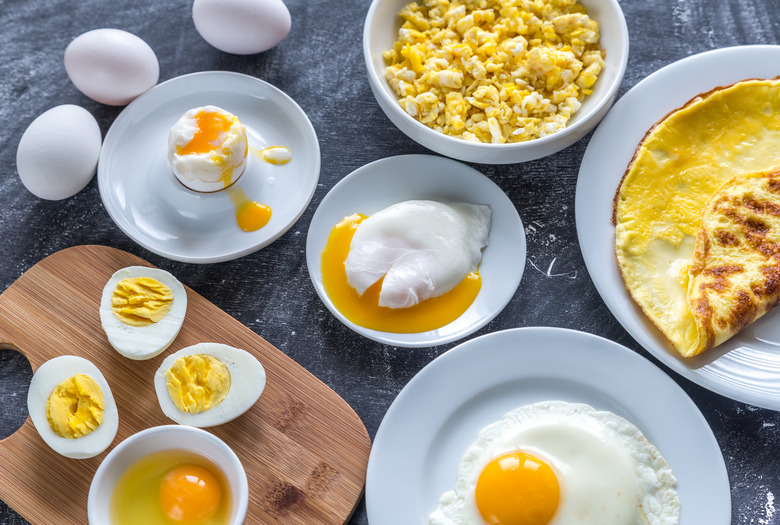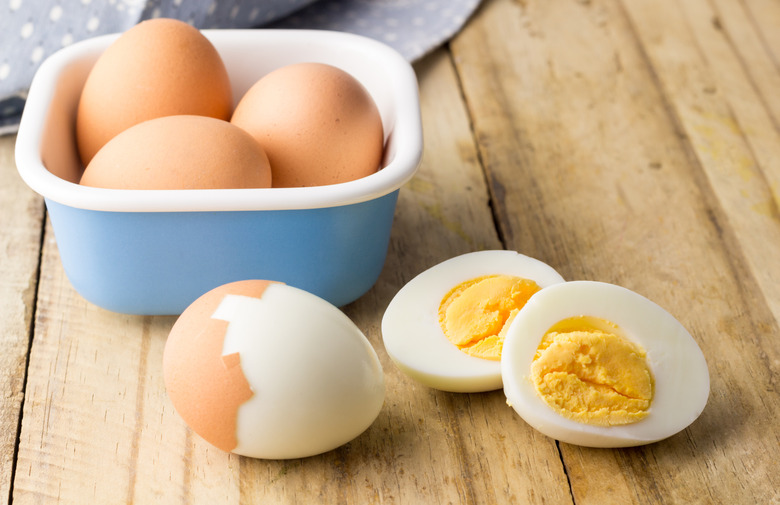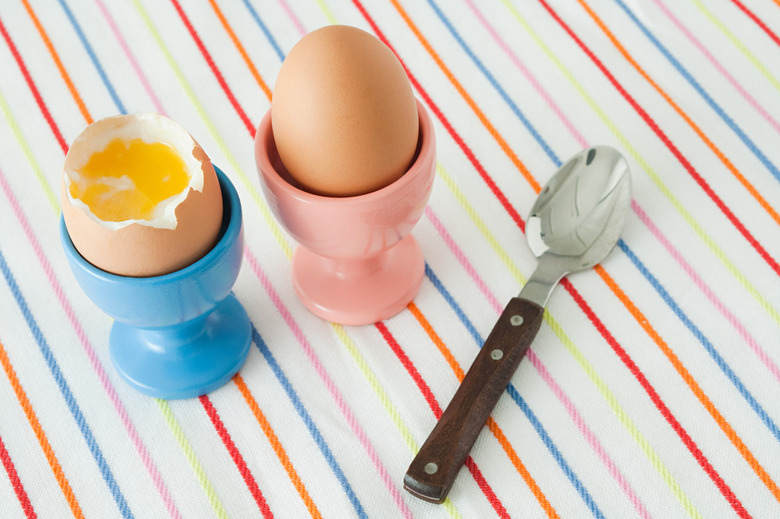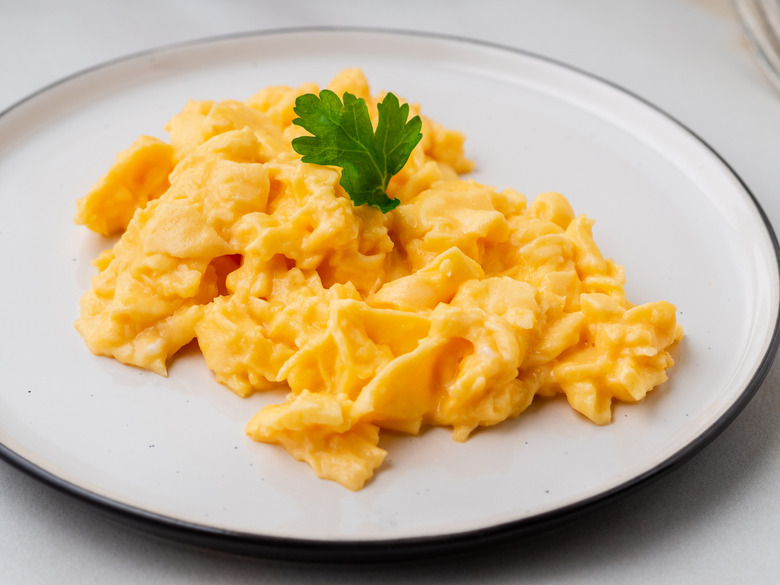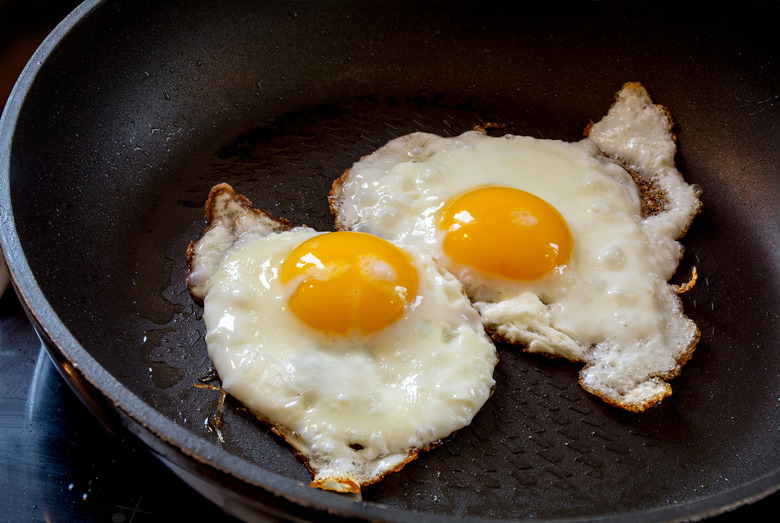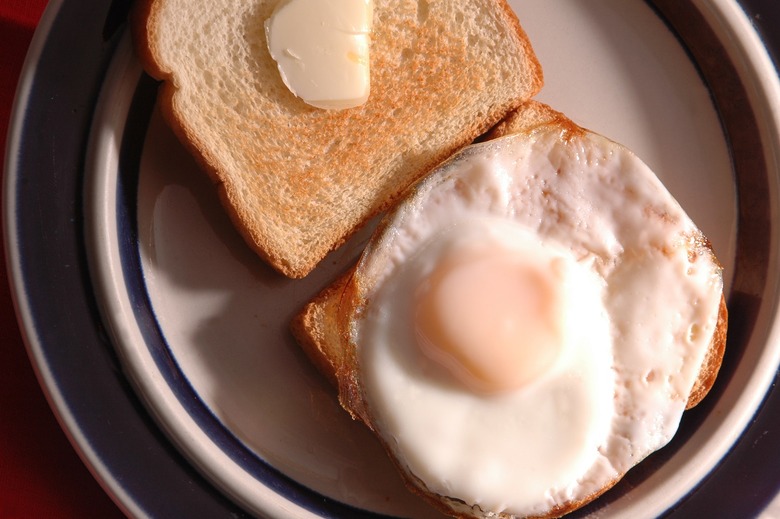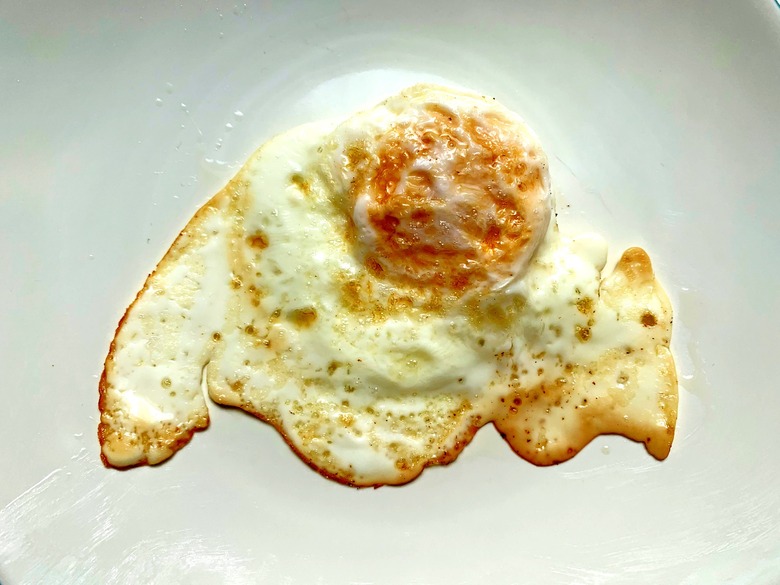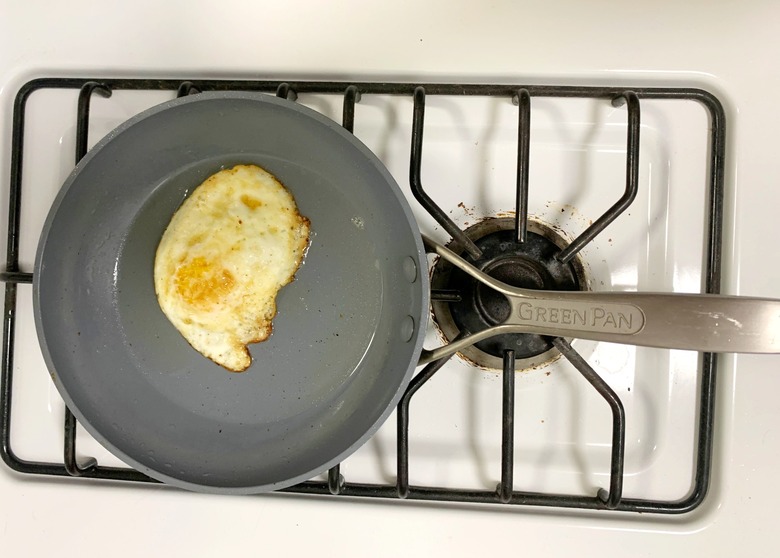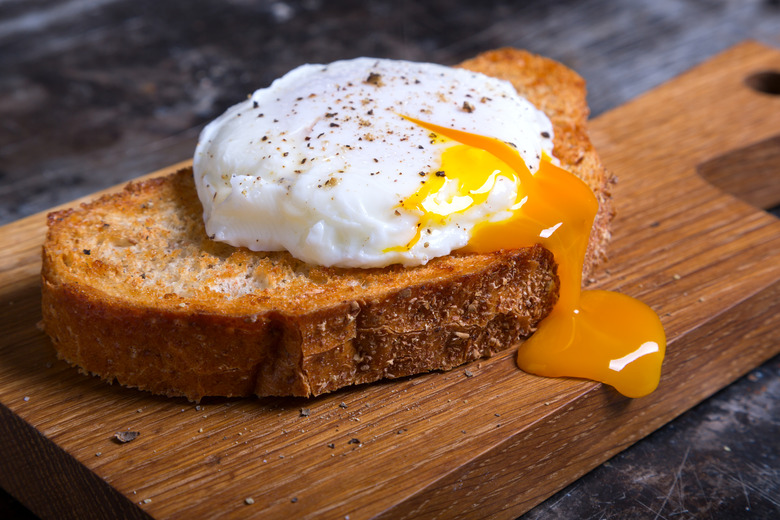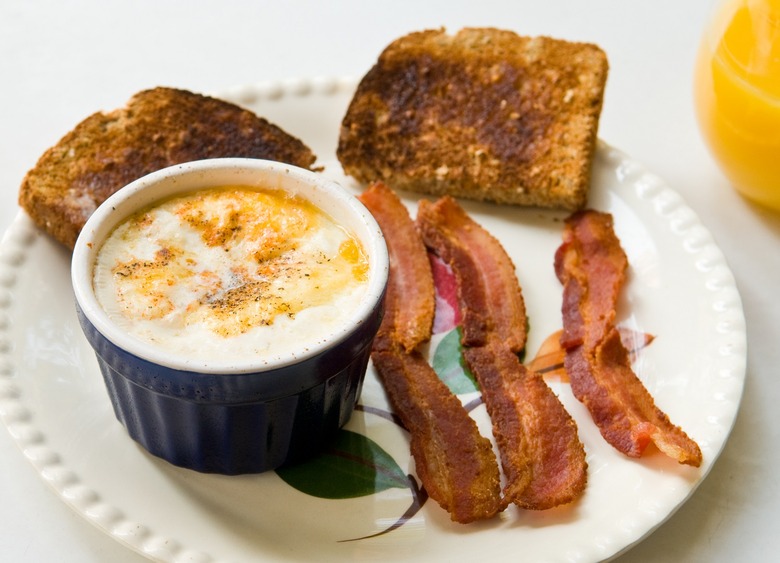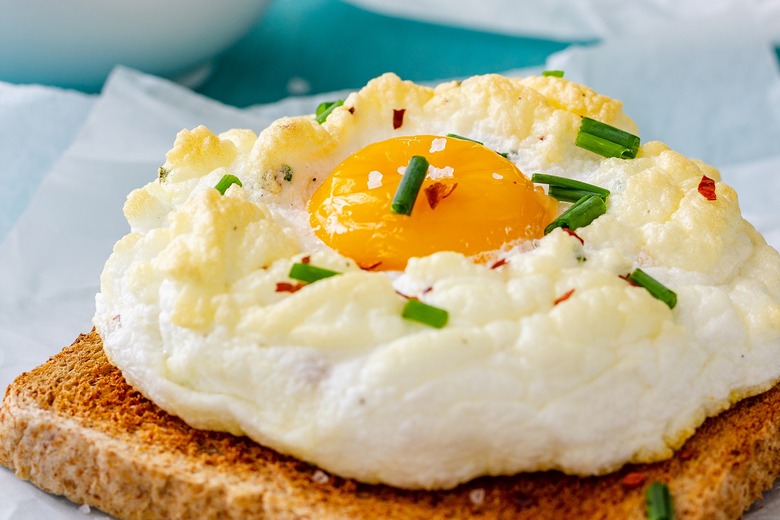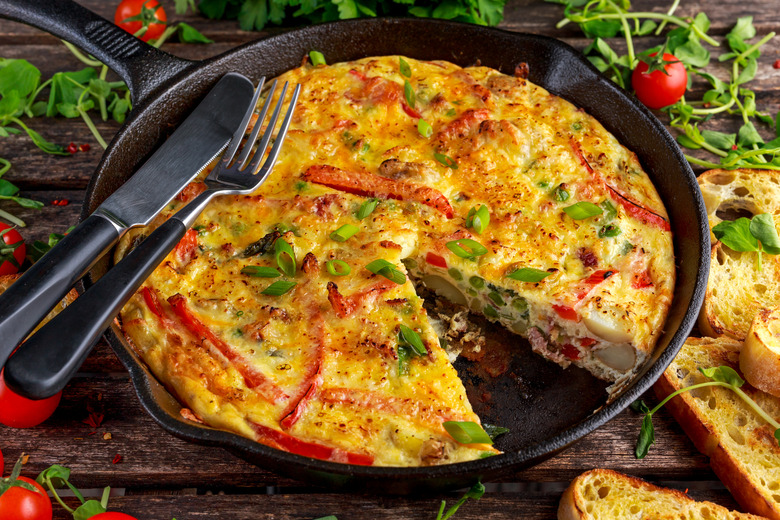The 12 Essential Ways To Cook An Egg
How do you like your eggs? Hard-boiled, scrambled, as an omelet, over easy, over hard? What is an over easy egg, anyway? And how is it different from a sunny side up egg?
You may think you know every way to cook an egg, but the 12 essential ways to prepare this staple actually require quite a bit of know-how — even scrambled eggs are surprisingly easy to mess up. So if you want to learn how to cook the best eggs every which way, consider this your comprehensive guide.
Hard-Boiled Eggs
Hard-boiled eggs are the base ingredient for deviled eggs and egg salad as well as a quick and easy breakfast that you can make ahead. To make perfect hard-boiled eggs, use older (i.e, not fresh from the hen) eggs, place them in a pot and cover them completely with cold water. Then, bring the water to a boil over high heat. Once the water comes to a rolling boil, turn the heat off, cover the pot and remove it from the heat. Allow the eggs to sit in the water until they are cooked; 9 minutes for medium-sized eggs and 12 minutes for large eggs. After that time period, transfer the eggs to an ice bath. It's just that simple! But if you need more in-depth instructions, check out our full guide to making (and peeling) hard-boiled eggs.
Soft-Boiled Eggs
Soft-boiled eggs are a little more temperamental than their hard-boiled counterparts. To make soft-boiled eggs, bring water to a rapid, rolling boil over high heat. Using a large spotted spoon, carefully add the eggs one at a time. Lower the heat until it's at a simmer. Cook the eggs for 5 to 7 minutes, depending on just how "jammy" you want your eggs. Cool the eggs in an ice bath. If you happen to have egg cups lying around, this is the time to break them out. Place your soft-boiled egg in an egg cup, crack open the top and eat the egg with a spoon or dip in some toast. Alternately, you can scoop the egg out to enjoy on bread, pasta or salad. Soft-boiled eggs should be eaten immediately rather than made ahead.
Scrambled Eggs
Making perfect scrambled eggs seems like an easy enough process — but there's a big difference between meh and extraordinary. Start with fresh eggs and crack them into a bowl. You can add a splash of cream, milk or water to your eggs, but you can also just keep them plain. From there, whisk your eggs really, really well until they have a foamy, frothy, smooth and light consistency, and there's no white or clear spots. Next, put a nonstick skillet over medium-low heat and add a pat of butter. Spread the butter around, coating the skillet completely. Add your eggs and use a silicone spatula to continually move them around the pan; pay particular attention to pushing the edges toward the middle of the pan. Cook to your desired level of doneness (some people prefer softer eggs, some harder), season with salt and pepper and, if you're feeling creative, serve with any of these unexpected ingredients that go great with scrambled eggs.
Sunny Side Up
Perhaps the most picturesque of the fried eggs category, sunny side up eggs start with a nonstick skillet over medium heat. Add in 1 tablespoon of butter, oil or — for the ultimate fried egg — bacon grease. After your fat of choice has melted and completely covers the bottom of the skillet, crack your eggs into the pan and lower the heat to medium-low. Cover the pan and cook for about 4 minutes, keeping a careful eye on the egg to make sure the yolk does not overcook; the whites should be fully set but the yolk should still jiggle. Season with salt and freshly cracked black pepper and enjoy.
Over Easy Eggs
Over easy eggs follow the same steps as a sunny side up egg, but you should carefully flip the egg once the whites have set and cook it for 10 seconds longer. An over easy egg will still have a runny yolk when you cut into it.
Over Medium Eggs
For an over medium egg, flip your sunny side egg and cook for a minute longer; this creates a jammy egg yolk consistency. These are the perfect fried eggs to put on top of a burger.
Over Hard Eggs
With over hard eggs, the yolks are fully cooked and not at all runny. To make an over hard egg, make a sunny side up egg, flip it and keep cooking for about 90 seconds or longer until the yolk is totally set. Alternately, you can poke the egg yolk while it's cooking to ensure there's nothing runny about it. Over hard eggs are awesome in an egg sandwich.
Poached Eggs
If you want to make eggs benedict — one of the all-time best brunch dishes — you need to know how to poach an egg correctly. Start by filling a large, deep pot with cold water. Emphasis on deep. Add a tablespoon or two of white vinegar to help the egg set. Crack the egg into a small bowl; if you're poaching more than one egg, keep your cracked eggs separate. Turn on the heat and bring your water to 180F, just below a simmer. Give the water a good swirl to create a whirlpool, then gently lower the egg into the water and cook it for 2-3 minutes or until the egg is set. Remove carefully using a slotted spoon. This can be a tricky task, so read up on our full guide to poaching a perfect egg.
Baked Eggs
Baked eggs, also known as shirred eggs or oeufs cocotte, are a hands-off way to get delicious, decadent, dippable eggs. To make this French dish, first preheat your oven to 350F and boil water on the stove. Brush a ramekin with melted butter, crack an egg into the ramekin and add 2 tablespoons of cream. Season with salt, pepper and paprika. Place the ramekin in a baking pan with high sides, and pour the boiling water into the pan until it's about halfway up the side of the ramekin. Cover everything with foil and bake for 15-20 minutes. You can top your basic baked eggs with anything, including crispy bacon, chorizo, fresh basil, sauteed vegetables, cheese or whatever you fancy. For the full baked egg recipe, click here.
Cloud Eggs
A viral recipe from the last few years, cloud eggs are fluffy, fun and epically photogenic. Start by putting parchment paper on a sheet pan, greasing the parchment paper and preheating your oven to 350F. Separate the egg whites and yolks, keeping the yolks in individual ramekins (or their shells). Season the whites, then whip them until very stiff. Spoon the whites onto the parchment paper-lined baking tray to form "clouds." Create a dent with the back of your spoon, add the yolk back in and bake for 8 minutes. If you want more detailed steps, click here for the full cloud eggs recipe.
Omelets
You can add almost anything to an omelet, but at the end of the day, all you need is eggs, butter, a splash of milk or cream and seasoning. Start by cracking two eggs in a bowl along with 2 tablespoons of milk and whisking well with a fork. You'll know your eggs are ready when you pull the fork up and a homogenous stream of egg runs off without any white streaks. Heat your nonstick skillet over medium-low heat and add 3 tablespoons of butter; you'll know the pan is hot enough when small bubbles form. Add your eggs to the skillet and gently stir with a rubber spatula or wooden spoon so the eggs don't stick to the bottom while being sure to scrape down the sides. Once the omelet is at your desired level of doneness, remove it from the heat, rest, season with salt and pepper, add your desired filling, roll and enjoy. If this sounds slightly complicated, don't sweat it. We have a step-by-step guide to cooking the perfect French omelet.
Frittatas
Frittatas are one of the best ways to use leftovers and to use an entire carton of eggs. You'll need a dozen eggs, heavy cream, 2 cups shredded cheese, cooked veggies and meat of your choice and a cast iron skillet. Preheat your oven to 400F, and mix together your eggs, the cream, salt and pepper. Then, stir in your cheese. Add your mix-ins to the bottom of your cast iron skillet and pour the egg mixture on top. Bake for 10-15 minutes, checking on the early side so your frittata does not overcook. Need more info? Here's a full step-by-step vegetable and cheese frittata recipe.
Of course, there are many, many more ways to cook with eggs beyond these staples. After you master hard-boiled, scrambled and fried eggs, consider shakshuka, quiche, breakfast casseroles and more of these 101 ways to cook with eggs.
More from The Daily Meal:
Brown Eggs Or White? And Other Grocery Questions Answered
The Ultimate Guide to Pasta Shapes
